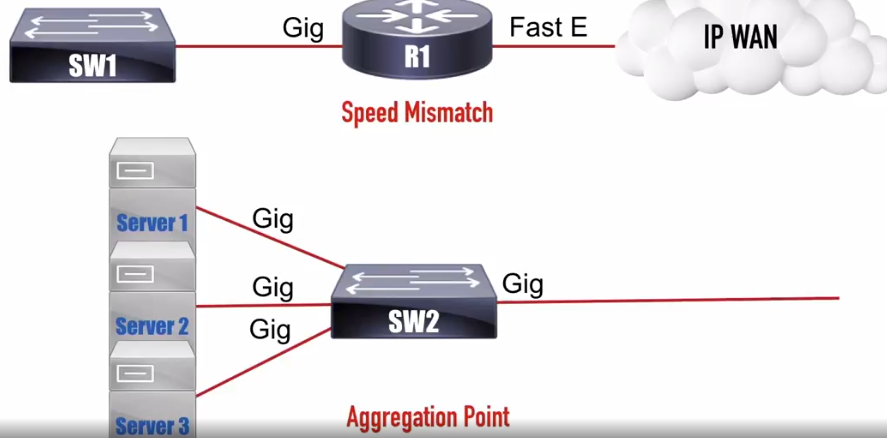Lesson 1: Why Do We Even Need QoS? 🚦

🚦 Quality of Service (QoS) in Networking: What You Need to Know! 🚦
In today’s fast-paced digital world, not all network traffic is created equal! 🎯 Imagine you’re in the middle of an important video conference, and suddenly your connection starts lagging because someone in the house is downloading a giant video game. Annoying, right?
This is where Quality of Service (QoS) comes to the rescue! It acts like a traffic controller for your network, making sure that important stuff (like your video call) gets priority over less critical data (like the video game download).
What Does QoS Do? 🌍
QoS prioritizes certain types of network traffic over others, ensuring that critical applications like voice, video, or business data are delivered without interruption. It’s especially useful when there’s limited bandwidth to share. No more dropped calls or frozen screens during a Zoom meeting because someone’s watching YouTube in 4K! 🖥️
Note: if you are congested all the time you need more Bandwidth
Why Do We Need QoS? 🤔
Without QoS, all network traffic is treated the same. This can lead to big issues for services that need to be fast and reliable, like video calls or VoIP (voice over IP). Let’s break down the main reasons QoS is essential:
- Lack of Bandwidth: You don’t always have enough bandwidth for every device and app.
- Latency & Jitter: Critical in real-time communications (think VoIP and video). Latency is the delay in sending data, while jitter is the variation in that delay. Both can make your calls sound like a robot speaking in slow motion! 🤖
- Packet Loss: Missing packets can ruin video streams or garble voice calls. It’s like trying to listen to a song with random skips in the middle 🎶.
- Delay Variation: Inconsistent delays mess up the flow of data, especially bad for voice and video.
The Different Types of Delay Explained 🕒
Delay can cause problems if it’s too high, but not all delays are the same! Here are the main types:
- Propagation Delay: The time it takes for data to physically travel across the network. Think of it like the time it takes a message in a bottle to float from one side of the ocean to the other 🌊.
- Serialization Delay: The time it takes to get your data “on the wire.” It’s like waiting in line to board a plane—each bit of data has to wait its turn 🛫.
- Processing Delay: This is the time a router or switch takes to process a packet. Imagine it like a customs officer checking your passport at the airport ✈️🛂.
- Delay Variation (Jitter): When packets don’t arrive in a steady flow. Imagine you’re getting different pieces of your burger 🍔 at separate times—the lettuce now, the bun 5 minutes later!
🚦 QoS to the Rescue! 🚦
This is where QoS steps in, solving these problems by organizing and prioritizing traffic based on its importance.
What Comes Next?
Now that we know why we need QoS, in Lesson 2, we’ll dive into how QoS works its magic by classifying and marking different types of traffic. It’s like sorting through your mail, identifying what’s urgent and what can wait. 📧 Stay tuned!
Call to Action!
Ready to dive deeper into QoS? Look around your home or office network and think about which applications would benefit from QoS. Is it a video call, streaming service, or gaming console?

